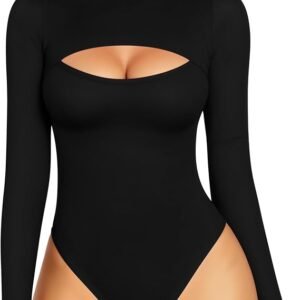The History of Women’s Corsets:
Outline:
- Introduction
- Brief overview of corsets and their significance in fashion
- Why corsets have remained iconic throughout history
- Origins of the Corset (Ancient Civilizations to the 16th Century)
- Early forms of body-shaping garments in ancient Greece and Rome
- The emergence of structured corsets in the Renaissance era
- Corsets in the 17th and 18th Centuries: A Symbol of Status
- The rise of boned bodices and whalebone stays
- Influence of royalty and aristocracy on corset trends
- The Victorian Era (19th Century): The Golden Age of Corsets
- Tight-lacing and the hourglass figure
- Health concerns and controversies surrounding corset use
- Innovations in corset design
- Edwardian Corsets: The S-Bend Silhouette
- The shift from the hourglass to the S-curve silhouette
- Changes in materials and construction
- The Decline of the Corset in the Early 20th Century
- World War I and women’s changing roles in society
- The rise of brassieres and girdles
- The Revival of Corsets in Modern Fashion
- The influence of designers like Vivienne Westwood and Jean Paul Gaultier
- Corsets as outerwear and statement fashion pieces
- Corsets in Pop Culture and Feminism
- The corset as a symbol of empowerment and controversy
- Corsets in movies, music, and art
- Health Implications of Corsetry: Then and Now
- Myths vs. realities of corset-related health issues
- Modern-day waist training and its risks
- Conclusion
- The enduring legacy of corsets in fashion
- The balance between aesthetics, comfort, and self-expression
Introduction
The corset is one of the most controversial yet fascinating garments in fashion history. Once an essential item in women’s wardrobes, it has symbolized elegance, status, and even oppression at different points in time. From rigid boned bodices of the Renaissance to the modern-day waist trainers and corset-inspired haute couture, this garment has continually evolved. But how did it all begin, and why has the corset remained an enduring fashion statement?
Let’s embark on a journey through the history of women’s corsets, exploring their transformations, cultural significance, and their unexpected revival in modern times.
Origins of the Corset (Ancient Civilizations to the 16th Century)
Though the structured corset as we know it emerged in the Renaissance era, the concept of body-shaping garments dates back to ancient times.
- Ancient Greece and Rome: Women in these civilizations wore wide bands of fabric, called strophium or zona, wrapped tightly around the torso to support the bust. While not corsets in the strict sense, these garments hinted at early forms of body contouring.
- Medieval Period: The 14th and 15th centuries saw the rise of stiffened bodices, often laced at the back or sides. These precursors to corsets aimed to flatten the chest rather than enhance curves.
- 16th Century Renaissance Corsets: The first true corsets, often referred to as “stays,” emerged in the 1500s. Women in European courts, including Catherine de’ Medici of France, popularized heavily structured bodices reinforced with whalebone or reeds to create a stiff, conical torso shape.
This early version of the corset focused less on waist reduction and more on maintaining an erect posture, symbolizing nobility and discipline.
Corsets in the 17th and 18th Centuries: A Symbol of Status
As fashion evolved, corsets became an essential symbol of social status.
- 17th Century: Corsets became longer and more structured, extending below the waist to shape the hips. The use of whalebone and iron busks became common, ensuring an even stiffer silhouette.
- 18th Century Rococo Fashion: This period emphasized a tiny waist paired with wide, exaggerated skirts like panniers. Women of the aristocracy wore exquisitely decorated corsets with embroidery, silk, and lace. The ideal figure was a tightly cinched waist with a lifted bust, signifying refinement and elegance.
While corsets were considered a fashion necessity, they were also criticized for being restrictive. However, women from noble families continued to embrace them as a mark of wealth and beauty.
The Victorian Era (19th Century): The Golden Age of Corsets
The 19th century marked the peak of corset culture, with the garment becoming more intricate and extreme in its shaping.
- Tight-Lacing and the Hourglass Silhouette: By the mid-1800s, corsets were designed to achieve extreme waist reduction, giving women the much-coveted hourglass shape.
- Health Concerns: Doctors and feminists of the time warned against corset-induced health issues such as organ displacement, breathing difficulties, and fainting spells. Despite these concerns, corsets remained immensely popular.
- Technological Innovations: Steel busks replaced whalebone, allowing for easier wear and removal. The invention of the sewing machine made corsets more widely available.
Victorian corsetry, with its dramatic emphasis on curves, remains one of the most iconic eras in corset history.
Edwardian Corsets: The S-Bend Silhouette
At the turn of the 20th century, corset designs evolved again, moving away from extreme waist compression.
- The S-Curve Corset: This new design, also called the Gibson Girl silhouette, pushed the chest forward and the hips back, creating an exaggerated, curved posture.
- Lighter Materials: Edwardian corsets used more flexible boning and softer fabrics, making them slightly less restrictive than their Victorian predecessors.
- Social Shifts: As women became more involved in sports and work, they started favoring looser, more practical clothing.
The Edwardian era signaled the beginning of the end for traditional corsetry.
The Decline of the Corset in the Early 20th Century
With World War I and the changing roles of women in society, corsets saw a sharp decline.
- Freedom of Movement: Women entering the workforce needed functional clothing, leading to the rise of bras and girdles.
- 1920s Flapper Fashion: The roaring twenties favored a boyish, androgynous silhouette, marking a complete departure from corseted shapes.
By the 1930s, corsets were nearly obsolete in everyday fashion, replaced by more comfortable undergarments.



